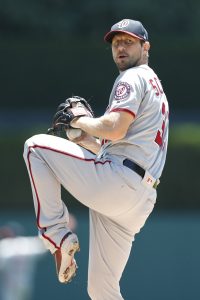Trey Mancini has penned a must-read post for The Players’ Tribune in which he discusses his shocking colon cancer diagnosis and ongoing outlook. His uplifting attitude is most welcome in these difficult times.
As baseball tries to get back to the field in 2020, Mancini is sorting out the complicated logistics of treatment in the midst of the coronavirus pandemic. He discloses that he has been diagnosed with Stage III cancer, which will require six months of bi-weekly chemotherapy.
As Mancini acknowledges, that timeline makes it rather unlikely he’ll suit up for the Orioles in 2020, if indeed there is a season. As he puts it, “I just want to make sure that I am physically fine before I go out there and start trying to perform again at a major league level.”
It goes without saying that Mancini’s recovery is of primary importance. He says he hopes to remain active, but he’ll first need to beat the disease before he’s able to build back toward professional athletics. Additionally, added care is warranted to ensure that Mancini does not become exposed to COVID-19, as his diagnosis and treatment put him at greater risk of serious complications.
It’s hard to see such a vibrant young man dealing with this kind of adversity, but Mancini’s outlook is at once hopeful and inspiring. MLBTR extends its very best wishes to Mancini and his loved ones.

